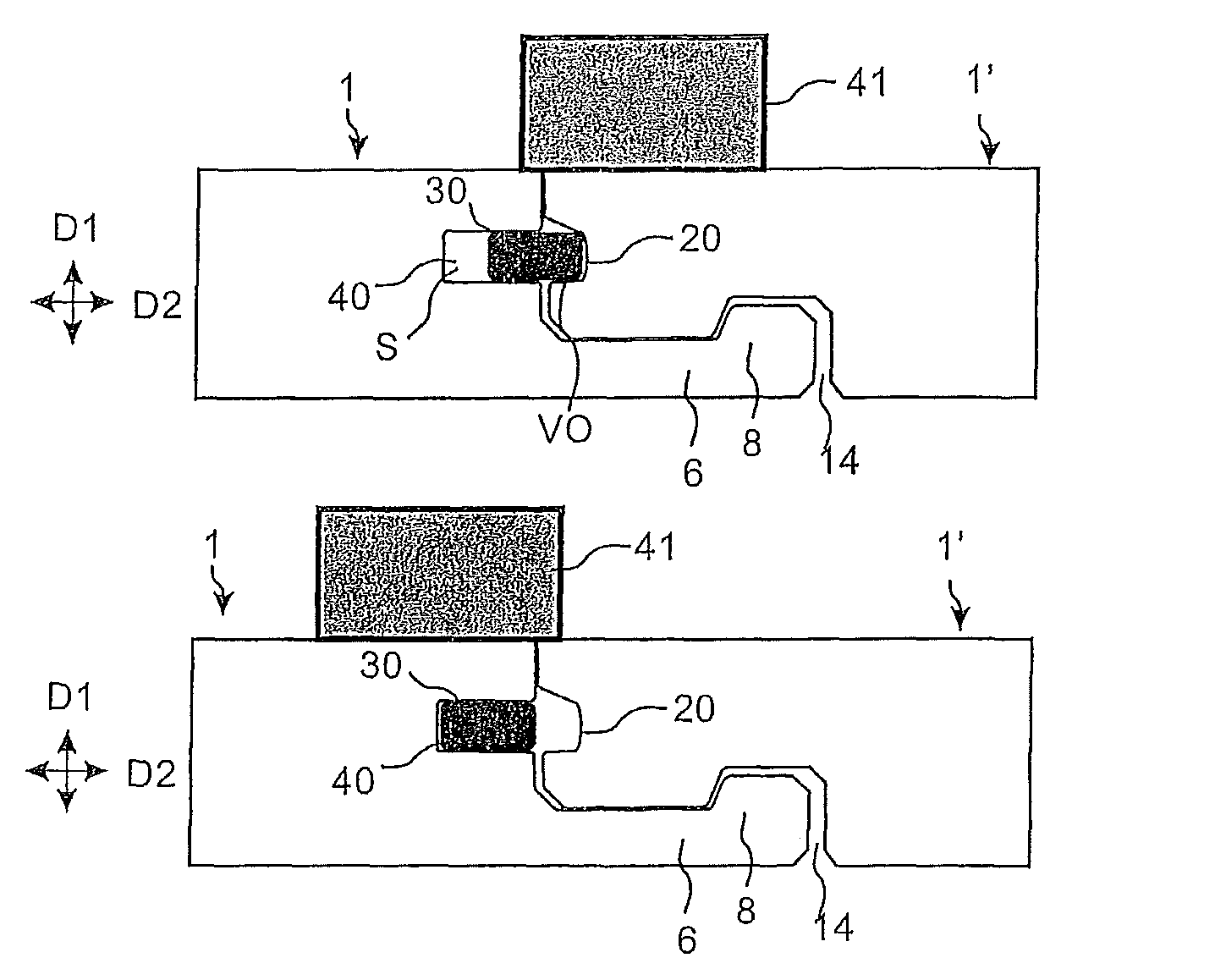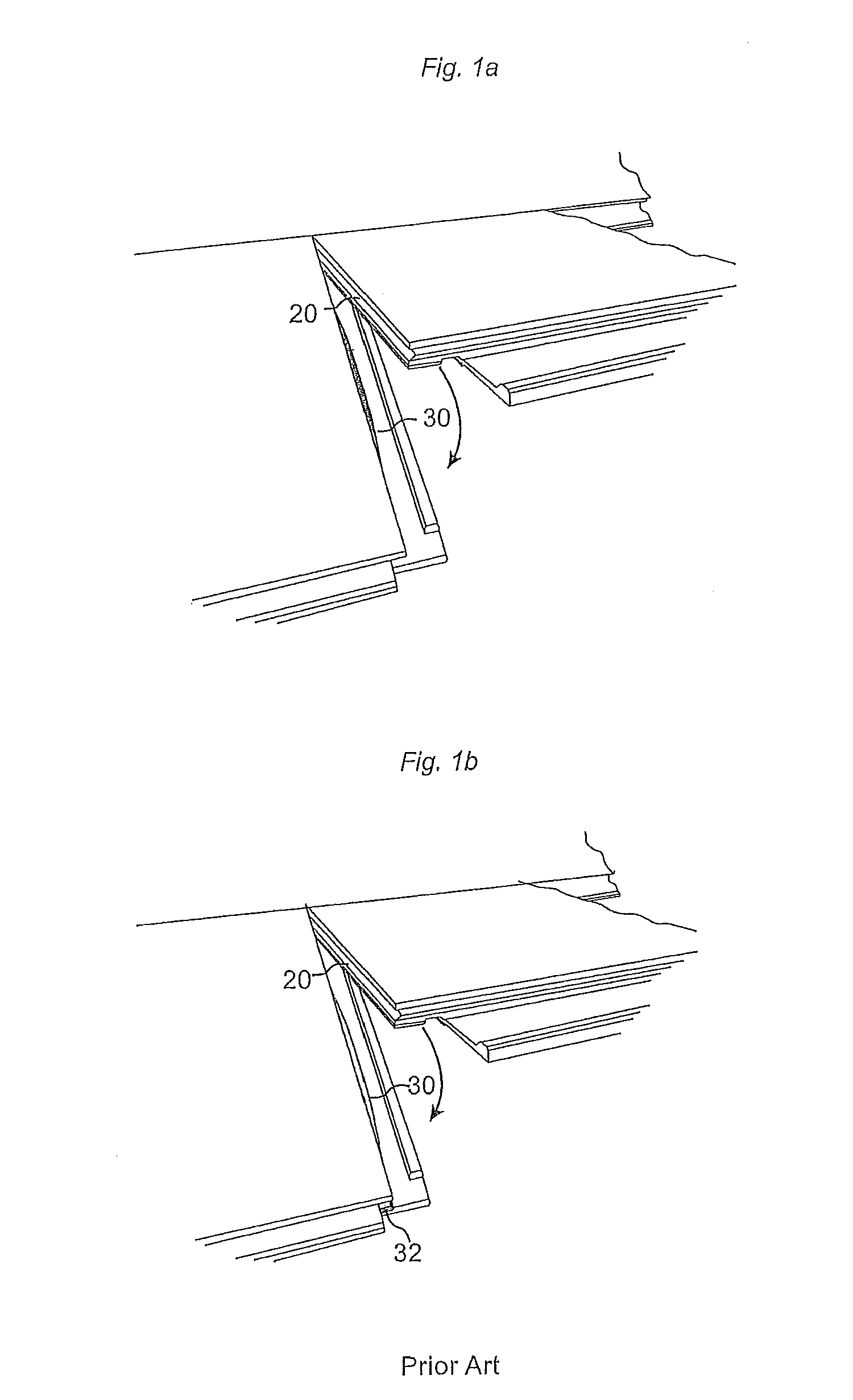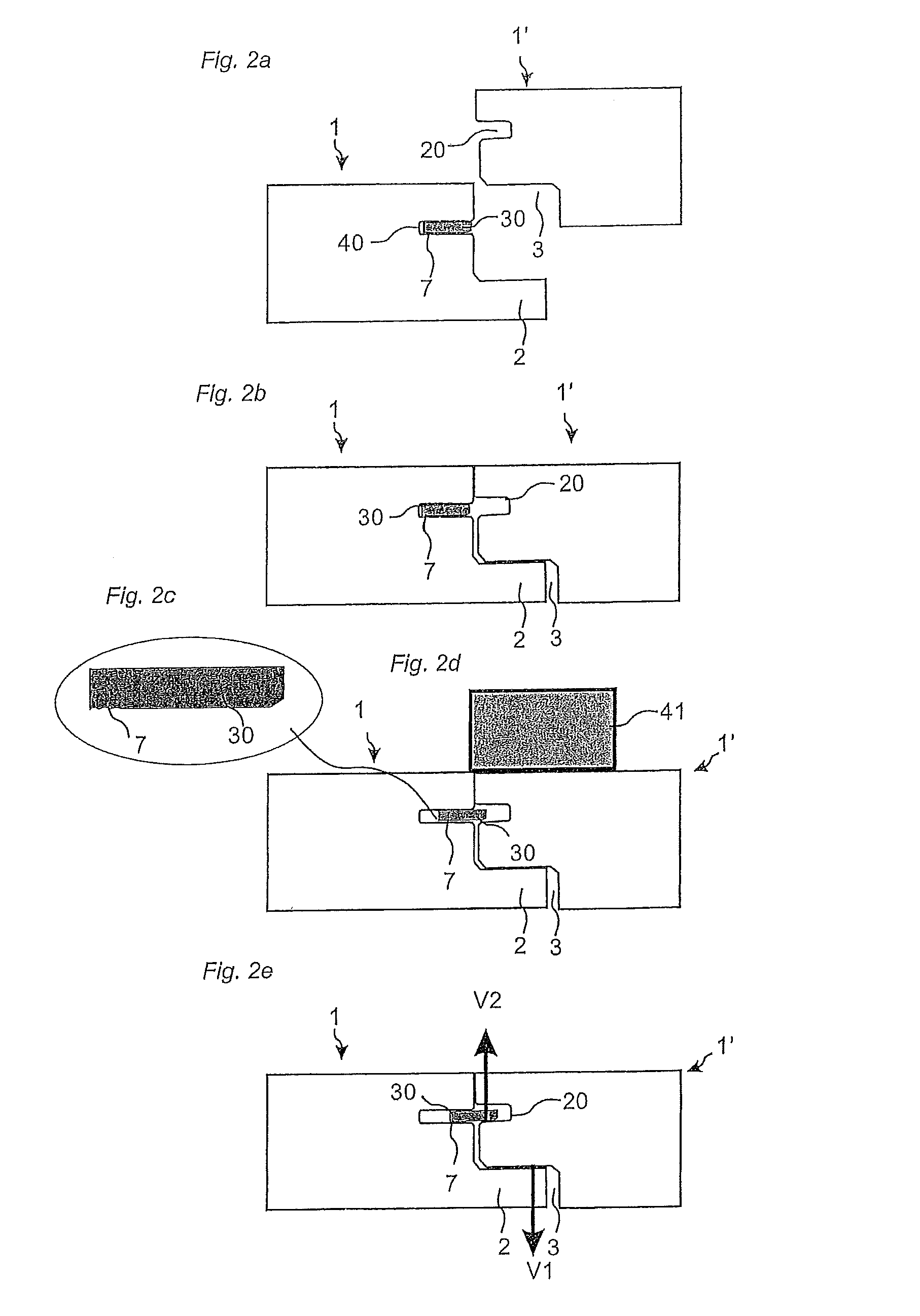Mechanical locking of floor panels
a technology of floor panels and locking mechanisms, applied in the direction of walls, building components, layered products, etc., can solve the problems of inability to connect floor panels, gap between the edge portions of short edges, and the risk of pushed away from each other, so as to reduce the separation force of short edges during installation or completely eliminate the effect of installation
- Summary
- Abstract
- Description
- Claims
- Application Information
AI Technical Summary
Benefits of technology
Problems solved by technology
Method used
Image
Examples
Embodiment Construction
[0058]FIGS. 2a and 2b shows one embodiment of panels 1, 1′ with a magnetic locking system according to the invention. The locking system is in this embodiment of the invention used to lock two edges vertically V1, V2. A first panel 1 has a displaceable tongue 30 of magnetic material arranged in a displacement groove 40 formed in the edge of the first panel 1. The second panel 1′ comprises a tongue groove 20. The panels comprise a protruding locking strip 2 in one edge that cooperates with a cavity 3 in an adjacent edge and locks the edges in a first vertical direction V1 when the second panel 1′ is moved preferably vertically along a vertical plane VP and arranged in the same plane as the first floor panel 1. FIG. 2d shows that the magnetic tongue 30 is displaced horizontally into the tongue groove 20 when a magnet 41 is arranged on the floor surface, preferably essentially on the surface of the second panel 1′. The whole tongue 30 is displaced in the displacement groove. The tongue...
PUM
 Login to View More
Login to View More Abstract
Description
Claims
Application Information
 Login to View More
Login to View More - R&D
- Intellectual Property
- Life Sciences
- Materials
- Tech Scout
- Unparalleled Data Quality
- Higher Quality Content
- 60% Fewer Hallucinations
Browse by: Latest US Patents, China's latest patents, Technical Efficacy Thesaurus, Application Domain, Technology Topic, Popular Technical Reports.
© 2025 PatSnap. All rights reserved.Legal|Privacy policy|Modern Slavery Act Transparency Statement|Sitemap|About US| Contact US: help@patsnap.com



